
In today’s data-driven retail environment, brands no longer rely solely on traditional market surveys or consumer panels. The rise of FMCG data scraping from quick commerce apps has transformed how companies access, interpret, and respond to real-time consumer behavior. Quick commerce—represented by platforms such as Blinkit, Zepto, Swiggy Instamart, and Dunzo—has redefined convenience, enabling ultra-fast deliveries and making data about FMCG products more dynamic and time-sensitive than ever.
With the surge in hyperlocal delivery networks, the need for FMCG Product data scraping From quick commerce Platforms has increased dramatically. This process allows businesses to capture and analyze massive datasets that reveal product availability, price fluctuations, promotional strategies, and consumer preferences across regions. Every second counts in quick commerce, and scraping this data empowers FMCG brands to stay one step ahead of their competitors.
Additionally, the integration of FMCG price intelligence Service has allowed decision-makers to monitor pricing patterns in real time. From tracking discounts to observing competitor campaigns, such insights can directly influence market share and improve profitability strategies.
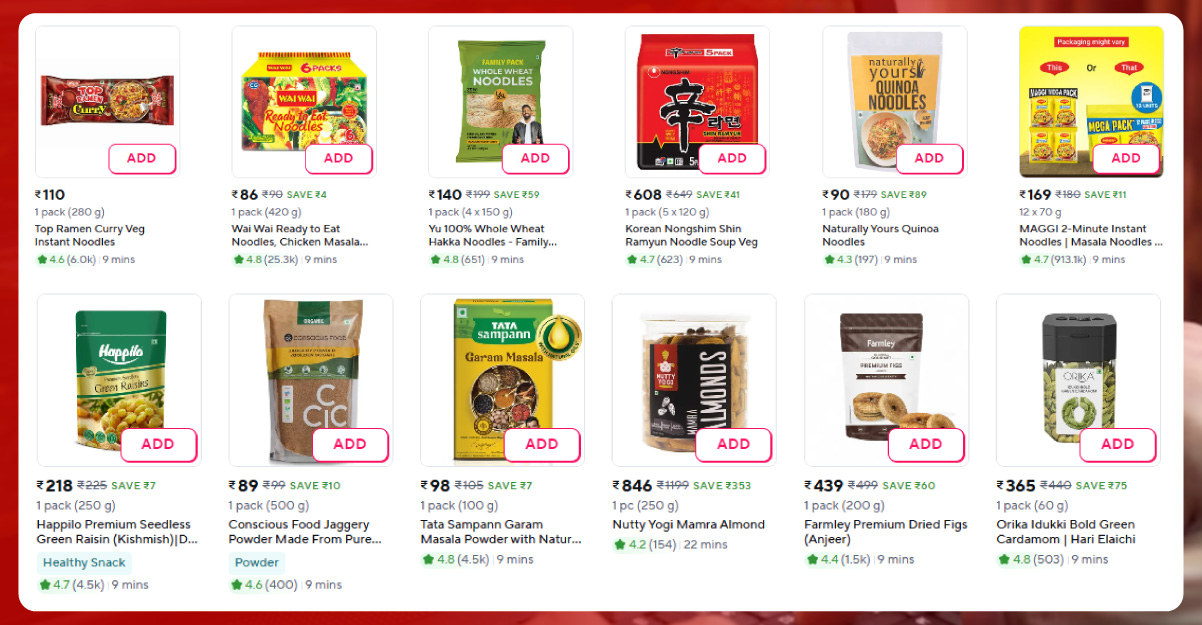
Quick commerce data is not merely a collection of prices or product names—it’s a live reflection of market behavior. When brands choose to Scrape FMCG brand data from online Q-commerce platforms, they unlock visibility into how consumers interact with their products. This includes details like product rankings, frequency of restocks, delivery availability, and even how promotions affect demand patterns.
For instance, a beverage manufacturer can see how its drink variants perform in different urban zones or under varying temperature conditions. Similarly, snack companies can analyze impulse-buy categories to identify what drives peak-hour sales. This form of digital intelligence provides marketing, operations, and supply chain teams with actionable insights that were previously hidden behind retail intermediaries.
One notable example is Blinkit FMCG data scraping, which enables real-time monitoring of grocery assortments, pricing shifts, and category trends. Blinkit’s rapid delivery system and extensive SKU listings provide valuable indicators of consumer demand velocity across different Indian cities. By scraping and analyzing Blinkit data, FMCG brands can understand which products need restocking, where to adjust distribution, and when to launch seasonal campaigns.
In parallel, Zepto FMCG data extraction offers access to another dynamic ecosystem of quick commerce insights. Zepto’s operational efficiency and market expansion strategy make it an ideal source for tracking product visibility, pricing competitiveness, and regional demand variations. Extracting data from Zepto allows brands to understand micro-level differences between urban clusters, ensuring that product placement and promotions are both timely and location-specific.
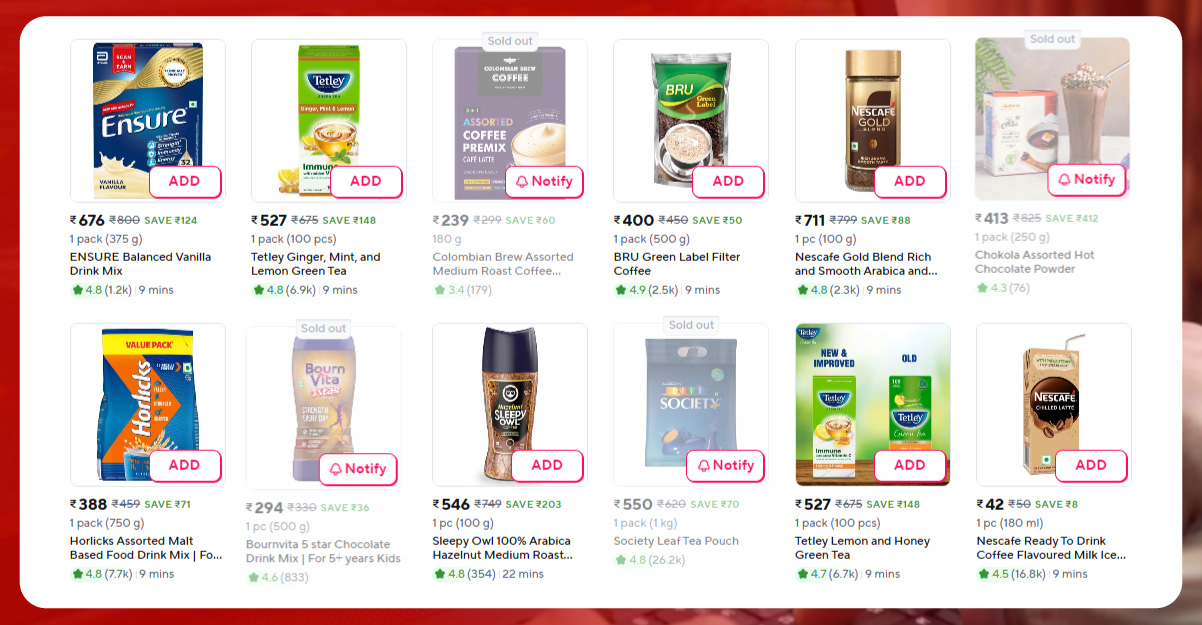
The FMCG sector depends heavily on understanding local consumption habits. Using an FMCG inventory scraping API, companies can retrieve data about stock availability, product replacement rates, and shelf presence in near real-time. This ensures that inventory planning aligns with actual consumer behavior instead of outdated market reports.
Quick commerce data also helps identify gaps in product availability. For example, if a brand notices frequent “out of stock” flags on particular SKUs, it can infer supply-chain inefficiencies or unexpected demand surges. By resolving these gaps, FMCG companies prevent revenue loss while improving customer satisfaction and loyalty.
The power of FMCG category trend scraping lies in its ability to visualize shifting consumption habits across demographics and time. During festive periods, certain categories—like confectionery, snacks, or beverages—witness demand spikes. Conversely, in health-conscious months, demand for organic or low-calorie products might soar. Scraping this data regularly helps brands anticipate and respond to these micro-trends effectively.
Furthermore, integrating an FMCG analytics API into a brand’s internal systems allows for continuous monitoring and predictive modeling. It can provide real-time dashboards that visualize pricing dynamics, consumer ratings, and category performance. Such APIs convert raw scraped data into actionable intelligence, assisting marketing, production, and supply chain teams in making fast, data-backed decisions.
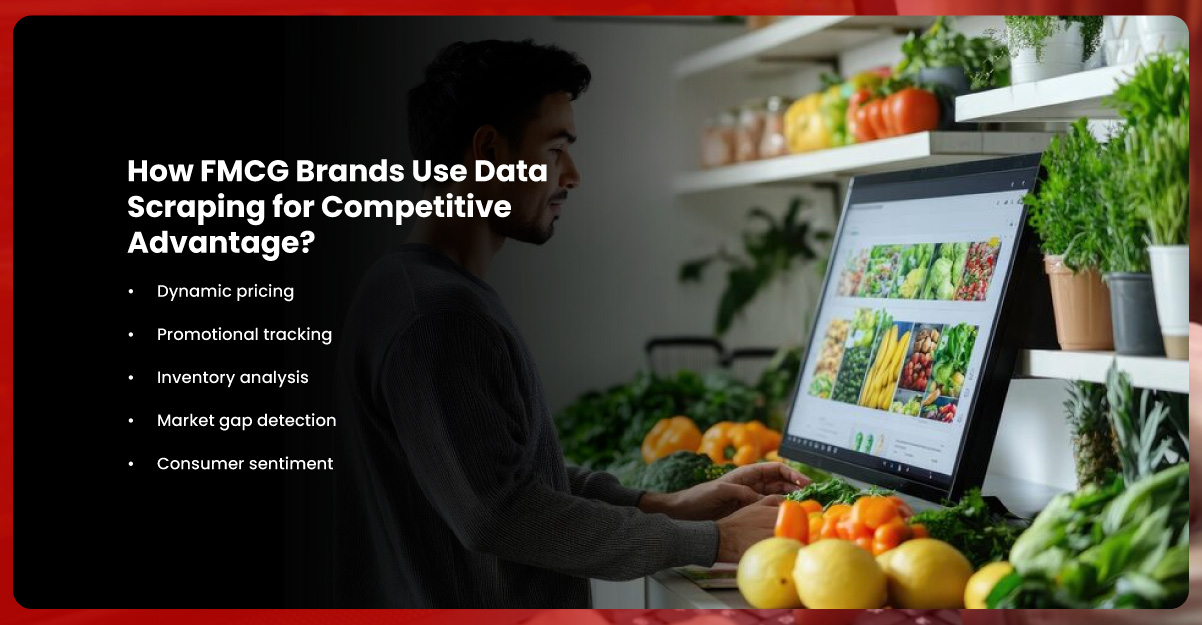
Modern brands understand the value of insight-driven competition. With FMCG Brands Use Quick Commerce Data Scraping for Growth, businesses can make smarter and faster decisions than ever before. From optimizing product placement to adjusting regional pricing, scraping provides a competitive edge that drives tangible outcomes.
Some practical uses include:
With these insights, brands can design marketing and distribution strategies that truly reflect consumer realities rather than relying on assumptions or outdated reports.
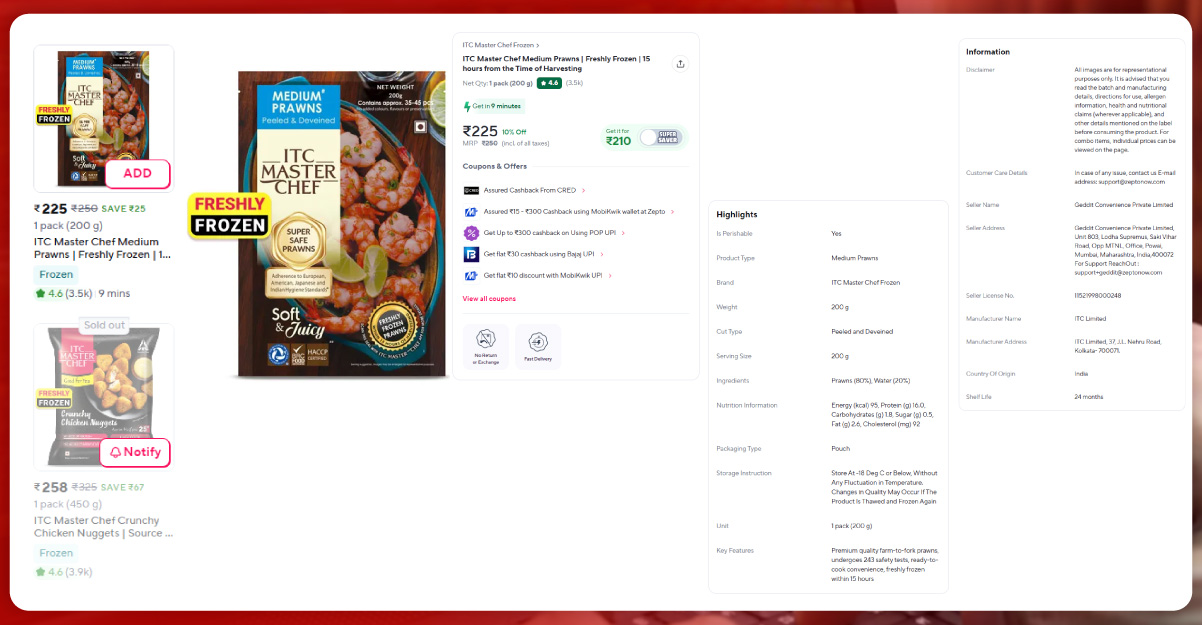
A well-designed FMCG Product Data Extractor automates the process of gathering structured data from multiple quick commerce apps. This scraper captures attributes such as product titles, brand names, prices, weight, availability, and discount rates. The extracted data can then be processed to create comparative analyses, category trends, and pricing dashboards.
Modern extractors also use AI-based recognition and NLP techniques to clean and categorize data accurately. They can handle dynamic pages, changing APIs, and evolving layouts without frequent manual intervention. This ensures that FMCG brands receive consistent, reliable datasets for their ongoing market research.
Building and maintaining such a tool requires expertise in scalable scraping architecture, data normalization, and ethical data collection practices. Ensuring compliance with each platform’s legal boundaries while maintaining data accuracy is crucial to sustaining a long-term analytics strategy.
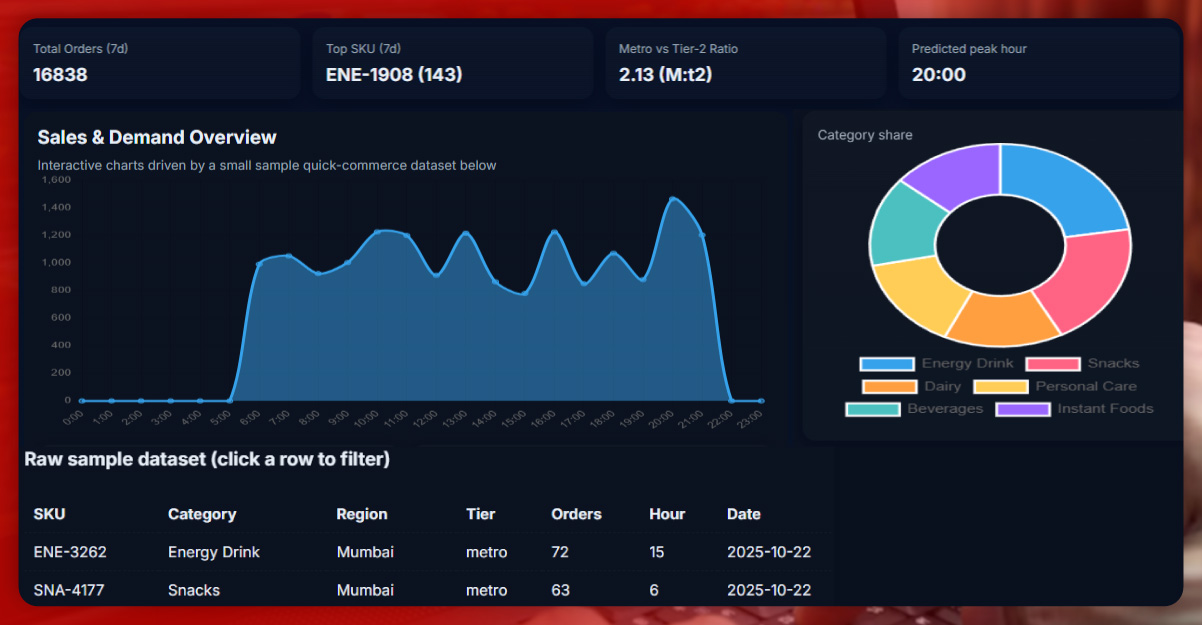
Access to Quick Commerce Datasets empowers FMCG companies to uncover hidden insights in areas like product lifecycle management, regional consumption differences, and time-based demand patterns. With this data, businesses can identify which SKUs perform best in metropolitan areas versus tier-2 cities or which product categories require reformulation due to emerging health trends.
These datasets also support the alignment of marketing campaigns with on-ground realities. For instance, if quick commerce data reveals that energy drinks sell rapidly during exam seasons, brands can launch targeted promotions aligned with academic calendars. Similarly, grocery brands can introduce bundled offers during festive seasons based on historical buying patterns visible in scraped datasets.
Quick commerce datasets are also instrumental for predictive modeling. They help in forecasting demand fluctuations based on time of day, day of the week, or external events such as weather changes or sports tournaments. When integrated with business intelligence tools, this predictive power can improve ROI across marketing and supply chain operations.
Unlock powerful market insights with our advanced FMCG data scraping services — drive smarter decisions and accelerate your brand’s growth today!
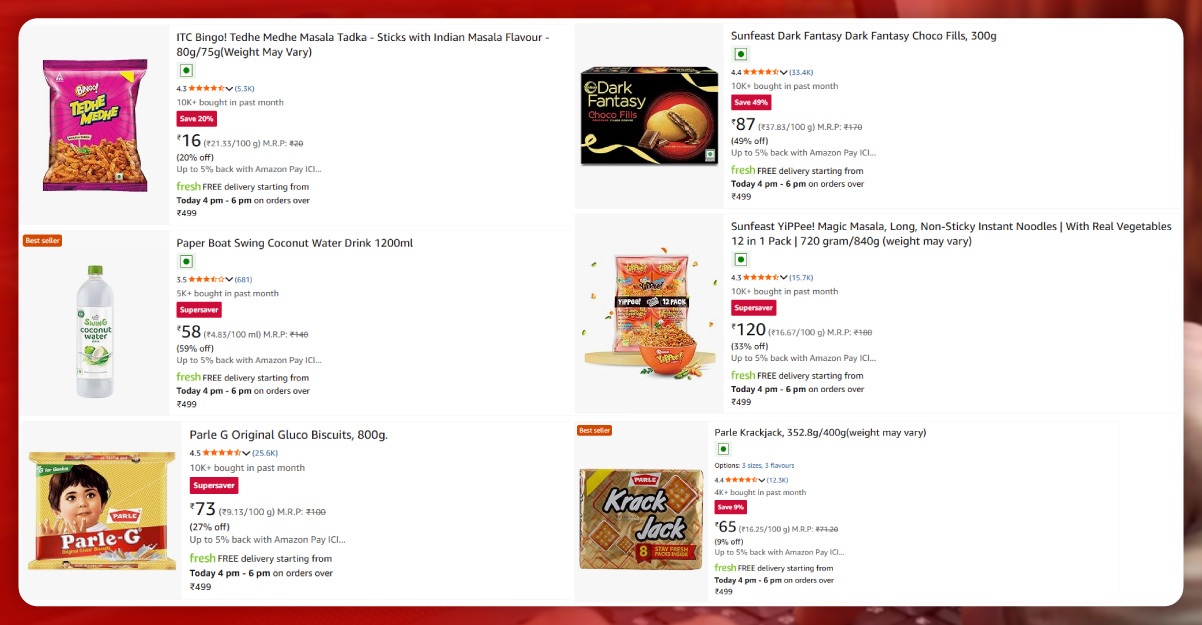
One of the most significant benefits of FMCG data scraping is real-time visibility into ever-changing online marketplaces. By continuously scraping data, brands can maintain updated dashboards that reflect the latest price movements, promotional activities, and new product introductions. This immediate insight translates into operational agility.
For logistics and production teams, such data ensures timely distribution and prevents overstocking or understocking issues. Retail teams can identify which categories require additional marketing push, while finance teams can assess margin performance based on competitive pricing trends. The interconnectivity between scraped data and internal analytics platforms ensures that decision-making remains data-first and dynamic.
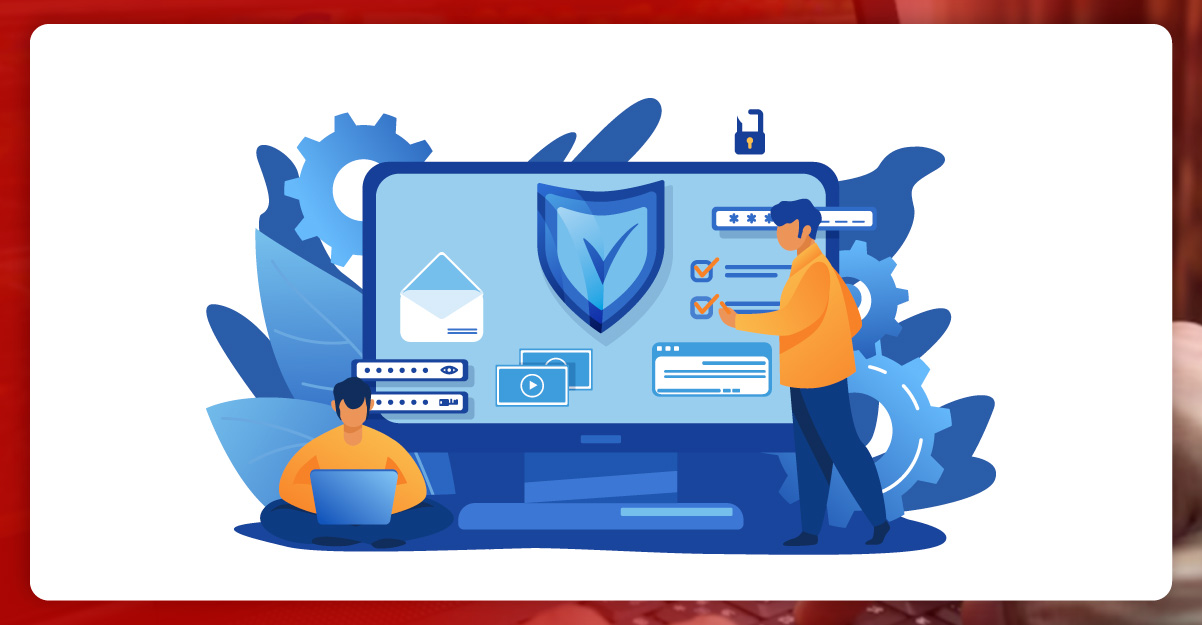
Responsible data scraping is essential to maintaining a transparent and lawful data acquisition process. While scraping public data is generally permissible, brands must avoid breaching platform-specific restrictions or accessing private information. Adhering to robots.txt guidelines, API rate limits, and ethical scraping standards ensures a sustainable and compliant operation.
Moreover, anonymizing and aggregating data helps maintain consumer privacy and protect brand integrity. The goal is to gather actionable business intelligence without violating any data protection frameworks. As FMCG brands increasingly depend on scraped insights, ensuring legal compliance strengthens both reputation and long-term strategy.

The role of data scraping in FMCG is only expected to grow. As consumers adopt faster purchase habits through instant delivery apps, the window for decision-making continues to shrink. Brands that can access, analyze, and act upon real-time insights will dominate the next phase of retail competition.
Future advancements will include AI-driven anomaly detection, predictive forecasting through machine learning, and integration of scraped datasets with CRM and ERP systems. As the boundaries between online and offline retail blur, FMCG brands will increasingly use hybrid data models—combining scraped online data with traditional retail audits—to create a comprehensive view of the market.
The value lies not just in data collection but in its strategic interpretation. Scraping empowers brands to transform raw, unstructured information into targeted actions that enhance profitability, brand loyalty, and market share.
In conclusion, Quick Commerce Data Intelligence Services play an indispensable role in helping FMCG companies operate smarter, faster, and more competitively. By leveraging accurate and structured market data, brands can refine pricing, distribution, and promotional decisions in real time.
Furthermore, FMCG Data Extraction Services empower enterprises with deeper visibility into how consumers engage with their products across multiple platforms. These services combine automation, analytics, and predictive insights to transform everyday data into meaningful business strategy.
With the integration of Quick Commerce Scraping API, FMCG enterprises gain access to continuous data flows that drive decision-making across production, marketing, and logistics. The ability to capture market shifts as they occur—rather than after the fact—represents a decisive advantage in the era of hyper-speed retail.
In a world where data equals dominance, FMCG brands that embrace quick commerce scraping will not just survive—they’ll lead the evolution of retail intelligence.
Experience top-notch web scraping service and mobile app scraping solutions with iWeb Data Scraping. Our skilled team excels in extracting various data sets, including retail store locations and beyond. Connect with us today to learn how our customized services can address your unique project needs, delivering the highest efficiency and dependability for all your data requirements.